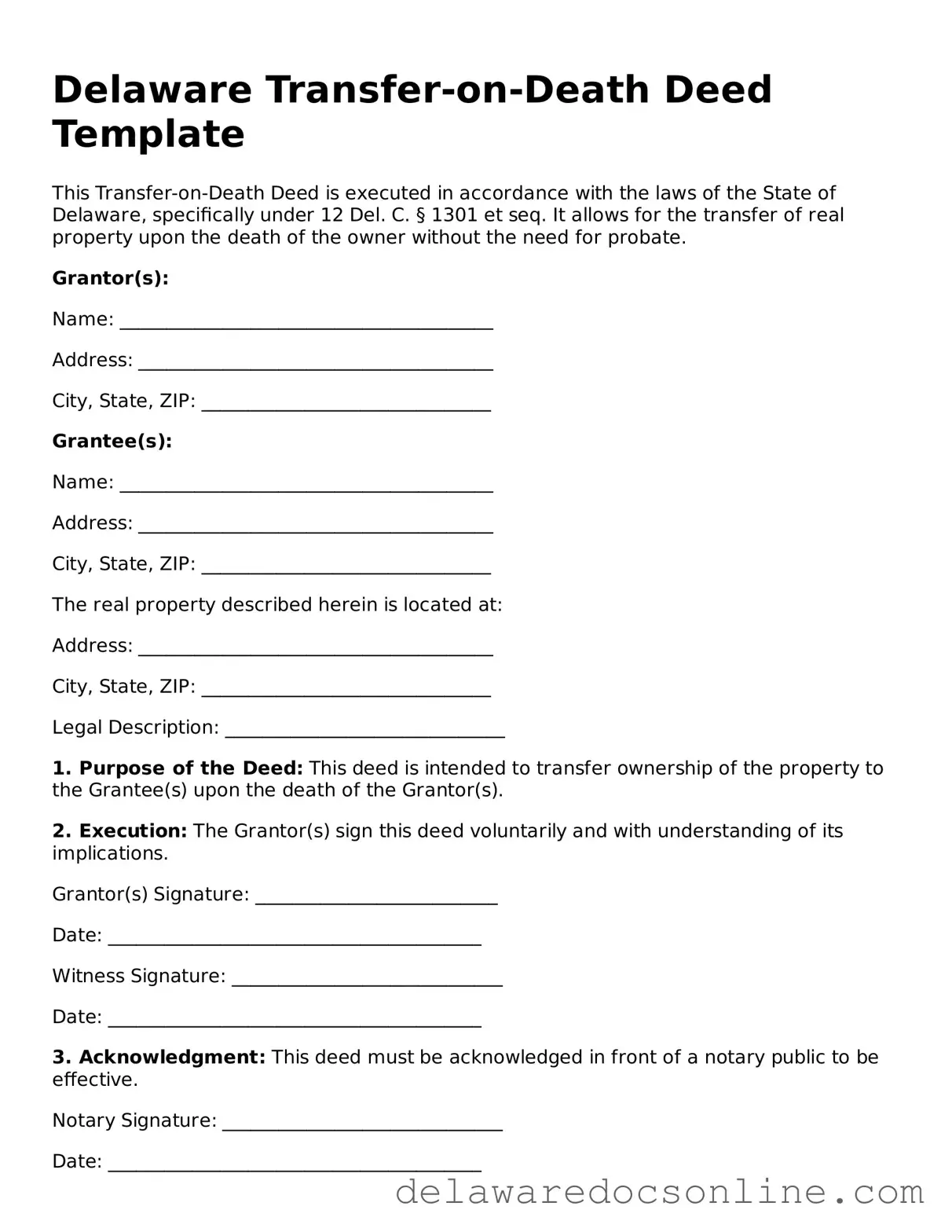Delaware Transfer-on-Death Deed Template
This Transfer-on-Death Deed is executed in accordance with the laws of the State of Delaware, specifically under 12 Del. C. § 1301 et seq. It allows for the transfer of real property upon the death of the owner without the need for probate.
Grantor(s):
Name: ________________________________________
Address: ______________________________________
City, State, ZIP: _______________________________
Grantee(s):
Name: ________________________________________
Address: ______________________________________
City, State, ZIP: _______________________________
The real property described herein is located at:
Address: ______________________________________
City, State, ZIP: _______________________________
Legal Description: ______________________________
1. Purpose of the Deed: This deed is intended to transfer ownership of the property to the Grantee(s) upon the death of the Grantor(s).
2. Execution: The Grantor(s) sign this deed voluntarily and with understanding of its implications.
Grantor(s) Signature: __________________________
Date: ________________________________________
Witness Signature: _____________________________
Date: ________________________________________
3. Acknowledgment: This deed must be acknowledged in front of a notary public to be effective.
Notary Signature: ______________________________
Date: ________________________________________
4. Recording: This deed should be recorded in the appropriate county recorder’s office to ensure its validity.
Recorded on: __________________________________
In Book: _____________________________________
At Page: _____________________________________
By executing this Transfer-on-Death Deed, the Grantor(s) affirm they are conducting this transfer in a manner consistent with Delaware state law.
